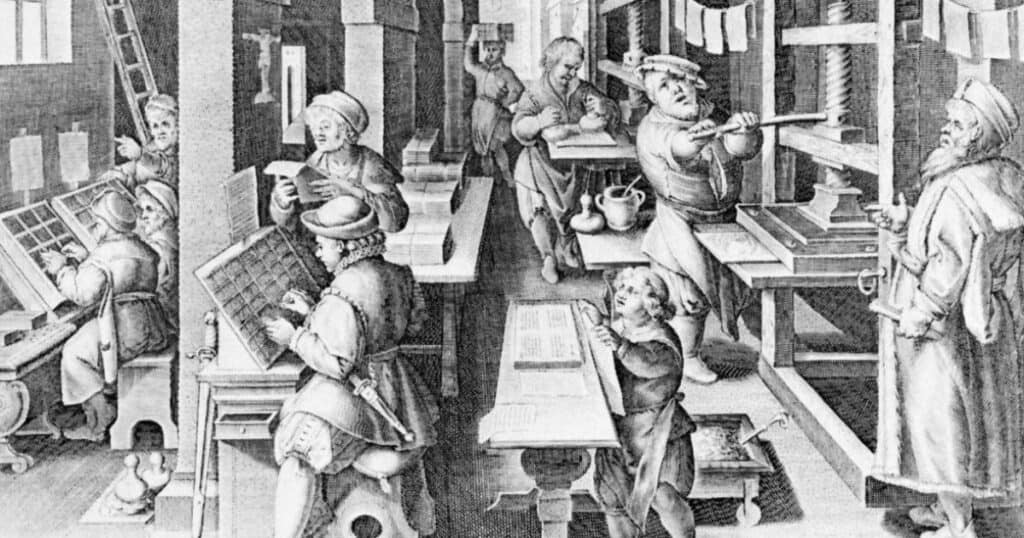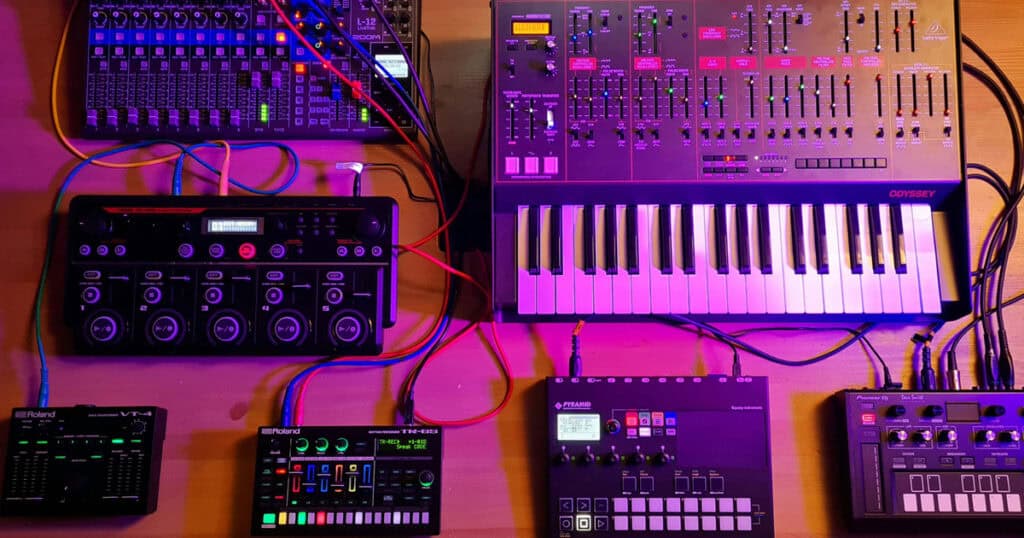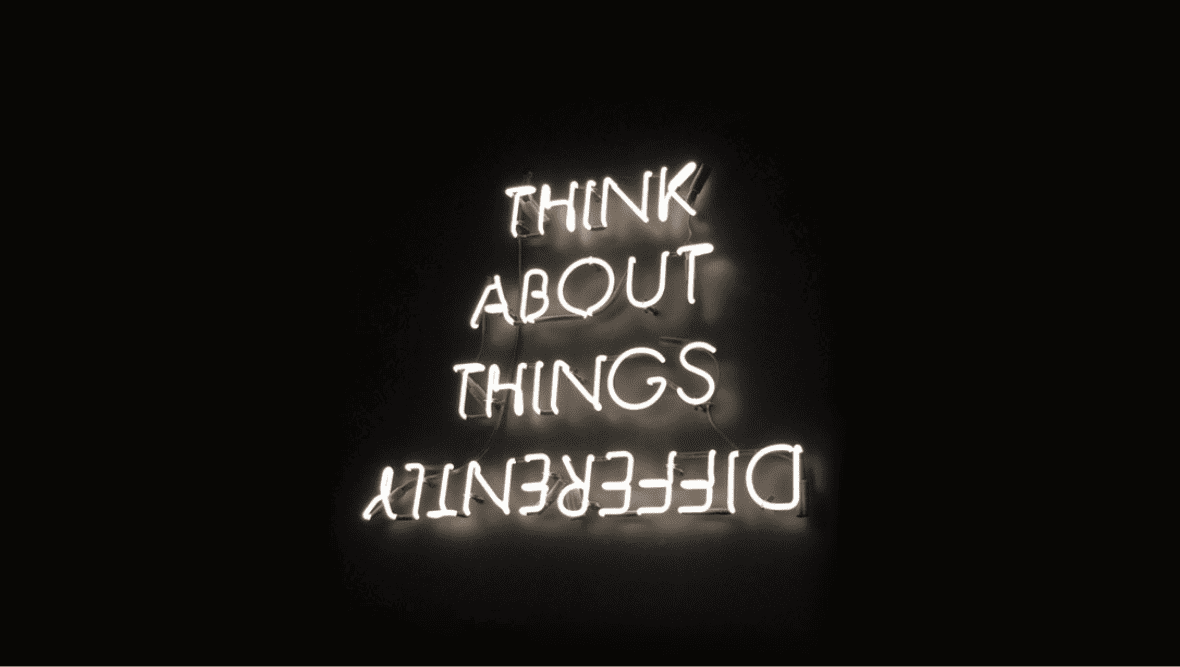
Is creativity dying in an age of algorithms, content saturation and instant gratification? Or are we misreading the signs and are actually on the verge of an unprecedented explosion in artistic innovation?
Questions that many artists and creatives are quietly (or loudly) asking themselves, as we doomscroll our way through another flat white.
To understand where we are heading tomorrow, we first need to look at the events that have shaped our today.
Creative Echoes of the Past - A Brief History of Tech
The Renaissance, of the 15th and 16th centuries, was a cultural movement that brought with it an expansive change in science, art, architecture, philosophy, literature, music, technology, politics and religion. It saw the crosspollination of concepts such as art and science, through the works and discoveries of artists like Leonardo Da Vinci. And the invention of technology like the modern-day printing press by Johannes Gutenberg. Empowering artists, writers and thinkers to break from tradition, freeing ideas and spreading them faster and further than ever before.
But as with any new technology, it came with its opposers. Scholars feared that the spread of too much knowledge and ideas could be dangerous and, with the threat to their jobs, the Scribes Guild destroyed printing presses and chased book sellers out of towns, accusing them of witchcraft.

A jump closer in time, and the Digital Revolution of the late 20th century saw technological and cultural advancements rapidly develop from analogue electronics and mechanical devices to the digital world we experience today.
Suddenly, the creative industry had the tools to express itself in ways it had only dreamt of. The movie and TV industry saw the rise of CGI, electronic synthesisers and samplers helped create new musical genres and subcultures. Digital cameras made the whole world accessible to everyone, and the rise of publishing and editing software gave everyone a creative outlet. And all these ideas and developments were transmitted via the World Wide Web.
Did we see opposition to these new tools? Of course. With any sudden advancement in knowledge and technology, we hear the voices of those left behind. Much like in the Renaissance, industries felt the effect of change and had to adapt to survive, seeing trades that took years to perfect suddenly replaced by computerisation and automation.
Throughout history, every creative expansion has been triggered by this mix of new tools, cultural shifts and the courage to defy the establishment.
Algorithmic Stagnation or Creative Breakthrough?
Today we find ourselves at a crossroads where creativity and technology have become so reliant on each other, we’re saturated with content, repetition and sameness.
But when we look under the surface, radical creativity is simmering. For example:
Graphic design is suffering from templated design trends and creative visual sameness.
Yet AI is assisting with ideation and prototyping, accelerating creative workflows rather than replacing creative vision.
Streaming services are full of algorithmically optimised music that is lacking in new genres and genuine innovation. But invention and experimentation are out there, like biofeedback music-sound that responds to brainwaves and emotions in real time, and artists like Holly Herndon who blend code and sound to create data-driven soundscapes.

Competing with high costs, accessibility and online streaming services, theatre has faced declining audiences. But innovations like immersive experiences, broadcast (cinema) performances, and augmented reality suggest a reimagining of the medium.
The golden age of the Hollywood Blockbuster is well and truly on the decline. The movie industry seems filled with recycled franchises and ever-rising costs. But a new generation of filmmakers is emerging who are utilising today’s tools, like virtual production, merging real-time 3D rendering with live-action. And the exploration of cinematic storytelling is captured through the rise of smartphone-produced films. The Danny Boyle film ’28 Years Later’ is reported to have been shot on iPhone 15s.
When artists embrace the tools and technological advancements, they don’t diminish their voice, they amplify it.
In Chaos, There Is Fertility – Anais Nin
What if the chaos, confusion and unpredictability are simply the fertile ground in which creativity, invention, and evolution can thrive?
- Global alliances. Creators from every continent can collaborate in real time.
- Access is democratised. Powerful tools are cheaper and easier to use than ever before.
- The rise of diverse voices. Marginalised creators have platforms to tell their stories.
- Generative AI. Access to the latest paintbrushes in the creative’s toolbox.
Much like the printing press catalysed the Renaissance, today’s tools - from AI to blockchain - could unify creativity and lead to an explosion of innovation across every creative outlet.
Creativity isn’t dead. It’s evolving.
Yes, creativity seems full of sameness. Yes, the algorithms can feel oppressive. But these are symptoms of transition, not of decline. We are at the precipice of a creative renaissance, and it’s time for creators to take back what is rightfully ours and explore the possibilities of the latest technology and innovations without fear.
AI and algorithms can only mimic and adapt what is already out there. It takes us to come up with the latest trends, the next wave of ingenuity and those ‘What if’ ideas.
Creativity isn’t dying. It’s mutating.
And that’s how it has always survived.


